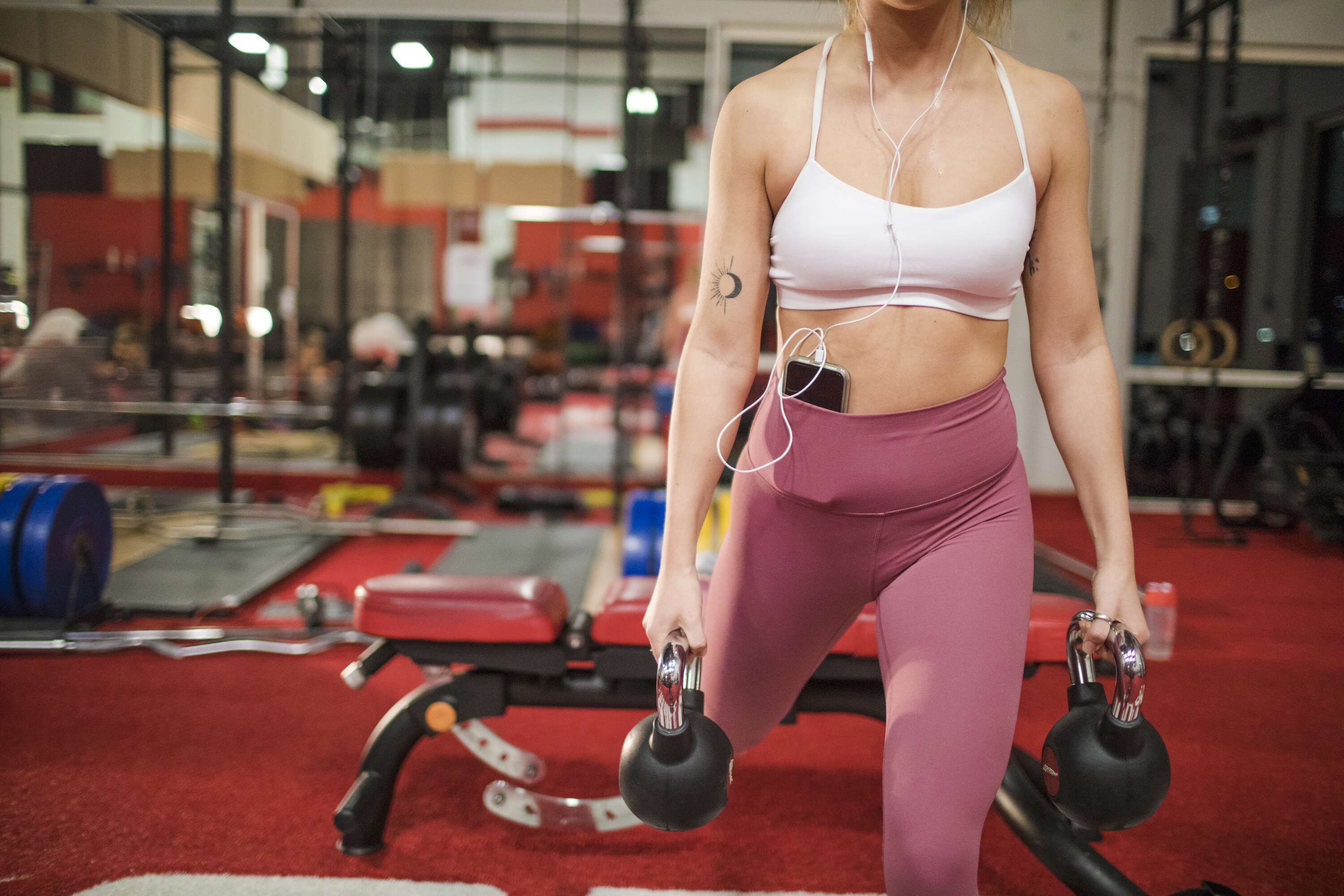
You may be surprised to find out that strength training can be done at home if you have never tried it. While the gym has all the equipment you need, you don't have to rent expensive equipment to get started. All you need to get started is a few dumbbells. These are some tips for home strength training. Once your home gym has been set up, you are ready to begin strength exercises.
First, find a bench/table with a high-back. You can also use empty bottles. They can be filled with water, dirt or sand. The bottles will bounce back from the bottom. For wall-sit, a wall that is blank is ideal. This exercise targets your core and quads. It's also a great way to get your blood flowing, even if you're not at a gym.

Next, you need to decide how much you will lift. Because they can train wherever they want, many people find strength-training more convenient at home. You can do one or more workouts in a room, or even a home-based training program. While you can use whatever equipment is available, you will still need a space that allows for movement and comfort. To set up a home-based fitness program, you can use canned goods and sandbags.
Warm-up exercises can be performed before you begin a home-based strength-training routine. Warming up can be done using jump rope, walking idly, and jumping rop to get your body moving. Follow the instructor's instruction once you are ready for lifting. You can pause the video to check your form and go back a bit slower if you are unsure. You can also check your form by doing your strength-training exercises in front of the mirror if it's not easy.
Doing strength training at your home has many benefits. For beginners, it's a great way to improve their confidence and technique. To regain their fitness, experienced gym-goers have the option to train at home. In addition to building confidence, they can work on their technique as well as improving their form. With the help of a strength-training app, they can do these exercises while at home.

It is possible to start strength training at home, without needing a membership. It is possible to use household items as a substitute for gym equipment. An adjustable barbell, dumbbells and a fitness ball are just a few of the items you can find at home. While you should focus on the overall movement, focus on each part of the body. The more muscles you use in a workout, it's more effective.
FAQ
Is cold a sign of a weak immune response?
Being cold gives you a weaker immune system because when you are cold, your body produces less white blood cells which fight infections. But, cold makes you feel better. Your brain releases endorphins that reduce pain.
How can I live a life that is full of joy every day?
It is important to identify what makes you happy. Once you have a clear understanding of what makes you happy you can go backwards. Asking others about their lives can help you to see how they live the best life possible.
You can also read books like "How to Live Your Best Life" by Dr. Wayne Dyer. He discusses happiness and fulfillment in every aspect of our lives.
How often do I need to exercise?
For a healthy lifestyle, exercise is vital. There is no set time limit for exercising. Find something you like and stay with it.
When you exercise three times per week, aim for 20-30 minutes moderate intensity. Moderate intensity will mean that you'll continue to be exerting yourself afterward. This type of workout burns around 300 calories.
You can walk for 10 minutes every day if that is what you prefer. Walking is easy on the joints and has low impact.
Jogging for 15 minutes three days a week is a good option if you prefer to run. Running is a great exercise to build muscle tone and burn excess calories.
If you're not used to exercising, start slowly. Begin with 5 minutes of cardio every other day. Gradually increase the duration until you reach your goal.
What are the top 10 healthy habits?
-
Every day, eat breakfast.
-
Don't skip meals.
-
Keep a balanced diet.
-
Drink lots of water.
-
Take care of your body.
-
Get enough sleep.
-
Avoid junk food.
-
Do some exercise every day.
-
Have fun
-
Make new friends
How to measure your body fat
A Body Fat Analyzer will give you the most accurate measurement of body fat. These devices measure the body fat percentage in people who wish to lose weight.
What is the most healthful lifestyle?
You can live a healthier lifestyle if you eat healthy food and exercise regularly. You will live a long and happy life if you adhere to these guidelines.
Start small by changing your diet and exercising routine. Try walking for 30 minutes each day to lose weight. Swimming or dancing are great options if your goal is to become more active. You could also sign up to an online fitness platform like Strava, which tracks your activity.
How much should I weight for my height and age? BMI chart & calculator
Use a BMI calculator to determine how much weight is needed to lose. Healthy BMI ranges between 18.5 to 24.9. If you want to lose weight, then you should aim to drop about 10 pounds per month. Enter your height and weight to calculate your BMI.
This BMI chart will help you determine if your body is overweight or obese.
Statistics
- WHO recommends consuming less than 5% of total energy intake for additional health benefits. (who.int)
- This article received 11 testimonials and 86% of readers who voted found it helpful, earning it our reader-approved status. (wikihow.com)
- In both adults and children, the intake of free sugars should be reduced to less than 10% of total energy intake. (who.int)
- According to the 2020 Dietary Guidelines for Americans, a balanced diet high in fruits and vegetables, lean protein, low-fat dairy and whole grains is needed for optimal energy. (mayoclinichealthsystem.org)
External Links
How To
What does the word "vitamin" mean?
Vitamins are organic compounds found naturally in food. Vitamins are essential for our bodies to absorb nutrients from the foods we eat. Vitamins cannot be made by the body; they must be taken from food.
There are two types if vitamins: water soluble, and fat soluble. Water soluble vitamins dissolve easily in water. Examples include vitamin C,B1 (thiamine), B2 (riboflavin), B3 (niacin), B6 (pyridoxine), folic acid, biotin, pantothenic acid, and choline. Fat-soluble vitamins can be stored in the liver or in fatty tissue. Examples include vitamin D, E, K, A, and beta carotene.
Vitamins can be classified by their biological activity. There are eight major categories of vitamins.
-
A - Vital for normal growth and maintaining good health.
-
C - vital for proper nerve function, and energy production.
-
D - Essential for healthy teeth and bones.
-
E is required for good vision and reproduction.
-
K - Required for healthy nerves and muscles.
-
P - vital for building strong bones andteeth.
-
Q – aids digestion of iron and iron absorption
-
R – Required for the formation of red blood vessels.
The recommended daily allowance of vitamins (RDA), varies according to age, gender, physical condition, and other factors. The U.S. Food and Drug Administration (FDA) sets the RDA values.
For adults aged 19 and older, the RDA for vitamin B is 400 micrograms daily. Because it is essential for the development of the fetus, pregnant women should consume 600 micrograms per daily. Children ages 1-8 require 900 micrograms per day. Infants below one year old require 700mg per day. But, between 9 months to 12 months, the amount drops to 500mg per day.
Children between the ages of 1-18 need 800 micrograms per daily for obesity, while children overweight require 1000 micrograms. Children underweight or obese will need 1200 mg per day.
Children 4-8 years old who have anemia must consume 2200 micrograms of Vitamin C daily.
Adults over 50 years of age need 2000 micrograms per day for general health. Breastfeeding or pregnant women require 3000 micrograms per daily due to higher nutrient demands.
1500 micrograms is the recommended daily intake for adults aged 70+, who lose approximately 10% of muscle each year.
Women who are pregnant or lactating need more than the RDA. Pregnant women need 4000 micrograms per dayduring pregnancy and 2500 micrograms per day after delivery. Breastfeeding mothers require 5000 micrograms daily when breast milk production is occurring.